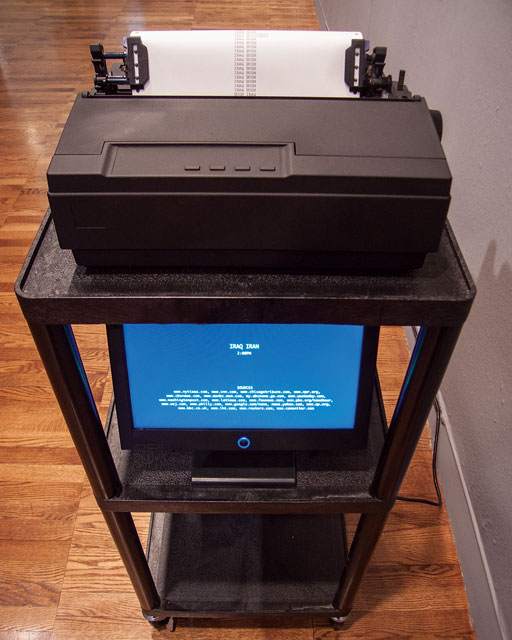Top Two News Words (By Hour) Ten Years of Reduction and Reflection
Main Article Content
Abstract
The Top Two News Words project began in 2007 as a gallery piece featuring a computer and dot matrix printer linked to an online parsing routine which gathered headlines from fifteen major news sources hourly, and analyzed and reduced these headlines to the two most frequently occurring words. The resulting pairs were printed each hour on a continuous sheet of computer paper, creating a linear document of the 24/7/365 news cycle. Since 2008, the online component of the piece has been running automatically, without its physical half, publishing hourly word pairs via RSS and on Twitter and building an online archive of nearly 90,000 hours of news.
Top Two News Words has consistently evoked questions of bias from its audience: “Why only these sources? Why only sources in English? Who are you to decide what is a major news source?” This is, of course, one of the desired outcomes of the project. A deeper question, which is reflected in the recent controversy and surprise over Facebook’s use of human curators for trending topics, is why don’t we investigate for bias in supposedly neutral online news aggregators such as Google? And, is it even possible to filter news programmatically without bias? I seek to use this project to illustrate the simple concept that curation, bias and reduction are not the antithesis of awareness in a world of continuous, direct news but are an essential part of navigating and understanding this world.
Article Details

This work is licensed under a Creative Commons Attribution-ShareAlike 4.0 International License.
References
Facebook Newsroom website, “Search FYI: An Update to Trending,” August 26, 2016, accessed September 15, 2016, http://newsroom.fb.com/news/2016/08/search-fyi-an-update-to-trending/.
Ibid.
Pew Research Center website, “Mapping Twitter Topic Networks: From Polarized Crowds to Community Clusters,” February 20, 2014, accessed September 15, 2016, http://www.pewinternet.org/2014/02/20/mapping-twitter-topic-networks-from-polarized-crowds-to-community-clusters/



